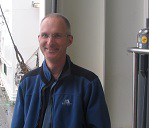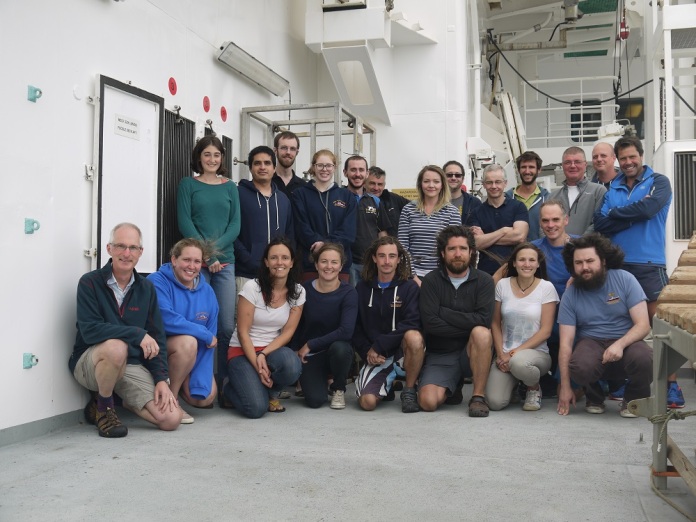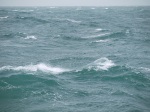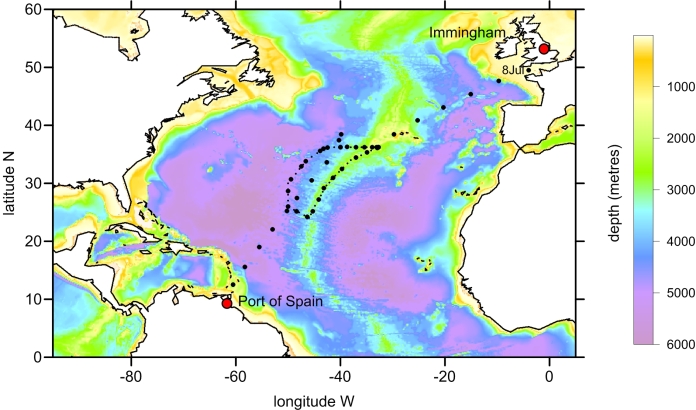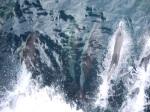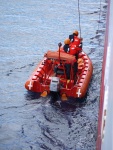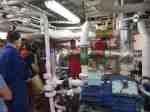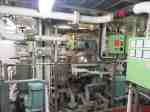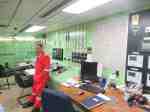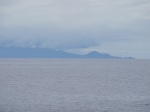We are now at 45 degrees 24.0 minutes N, 15 degrees 4.1 minutes W, and so about level with the southern Bay of Biscay. Weather still fine, with 8-10 knot southerly winds. From the forecast it looks like there’s a nasty low pressure system chasing us in from the west, but we seem to be keeping ahead of it and should be into the English Channel by the time it crashes into the west of Ireland.
Packing began in earnest yesterday, with lots of aluminium boxes and wire cages brought up from the hold onto the aft deck. It’s hard to imagine where all that stuff was stored, though admittedly there’s a good deal of stuff on the deck that came up as parts of the moorings. Equipment is being broken down, checked, and then packed up. Lab instruments are gradually being packed as the samples are completed, and we’ll be cleaning out the labs in a couple of days. There will be 3 large lorries turning up at Immingham to take most of the gear back to the Marine Facilities base in Southampton.
I’ve been working through some of the turbulence data to see if what we hypothesised was really happening over the ridge. It looks like the turbulence over the ridge, at spring tides, was about 5 – 10 times greater than it was in the deeper water away from the ridge at spring tides. So, we were right! That’s something of a relief….
-
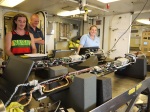
-
vmp maintenance and packing
-

-
lots of boxes
-

-
daily positions to july 6
